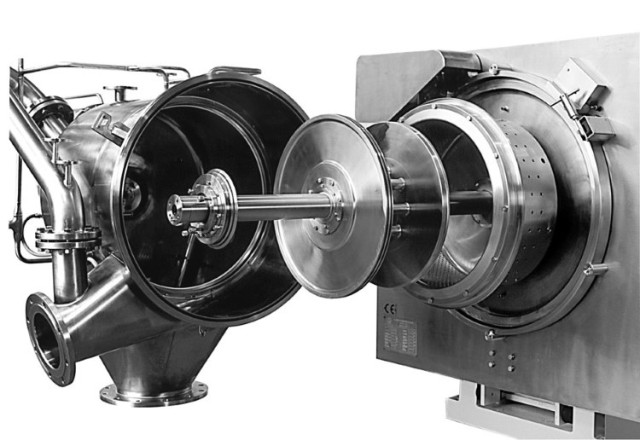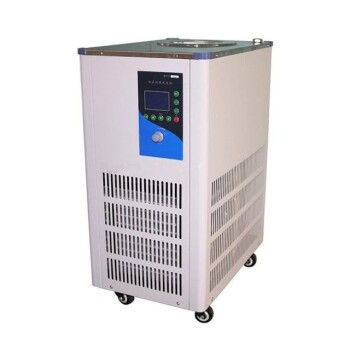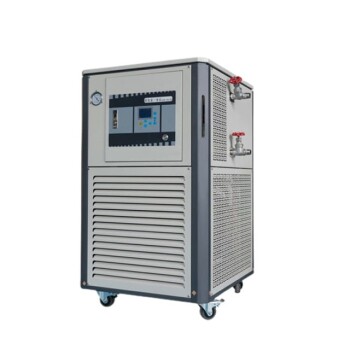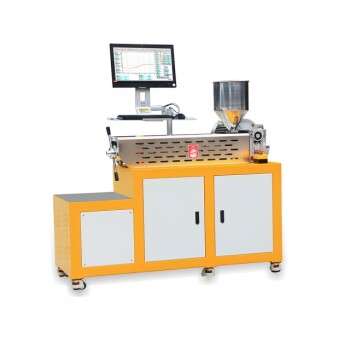High-speed Centrifuges
General High-speed Centrifuge
High-speed centrifuges, particularly the general high-speed centrifuge, are indispensable tools in scientific research, education, and various production sectors, including biology, chemistry, and medicine. These centrifuges harness the immense centrifugal force generated by the rotor's high-speed rotation to effectively separate liquids from solid particles or different components within liquid mixtures.

The general high-speed centrifuge is particularly adept at handling trace samples, making it ideal for rapid separation and synthesis processes. Its versatility allows it to be used across a broad spectrum of applications, from basic research to advanced production techniques.
| Feature | Description |
|---|---|
| Application Areas | Scientific research, education, biology, chemistry, medicine |
| Operational Method | Utilizes strong centrifugal force from high-speed rotor rotation |
| Primary Function | Separates liquids from solid particles or components in liquid mixtures |
| Sample Suitability | Suitable for rapid separation and synthesis of trace samples |
High-speed Refrigerated Centrifuge
The high-speed refrigerated centrifuge is a specialized piece of laboratory equipment designed to operate at speeds exceeding 10,000 revolutions per minute (rpm). This capability allows it to generate significant centrifugal force, which is crucial for the efficient separation of various biological and chemical components.

The centrifuge is equipped with angle rotors constructed from high-strength materials such as titanium alloy or aluminum alloy. These rotors are designed to maintain stability and durability under high-speed conditions, ensuring accurate and reliable results. The centrifuge tubes, which are often covered with polyethylene, provide additional protection and durability, making them suitable for handling delicate samples.
Primarily, the high-speed refrigerated centrifuge is utilized for the collection and analysis of a range of biological materials. This includes microorganisms, cell fragments, whole cells, large organelles, sulfuric acid precipitates, and immune precipitates. The refrigeration system integrated into the centrifuge ensures that the samples remain at a stable temperature throughout the process, which is essential for preserving the integrity and viability of biological samples.
| Feature | Description |
|---|---|
| Speed | Exceeds 10,000 rpm, generating strong centrifugal force. |
| Rotor Material | Titanium alloy or aluminum alloy for durability and stability. |
| Tube Covers | Polyethylene covers for added protection and durability. |
| Applications | Collection of microorganisms, cell fragments, cells, large organelles, sulfuric acid precipitates, and immune precipitates. |
| Refrigeration System | Maintains stable temperature, crucial for preserving sample integrity. |
This centrifuge is indispensable in fields such as microbiology, biochemistry, and immunology, where precise and rapid separation of components is necessary for both research and practical applications.
Low-speed Centrifuges
Low-speed Centrifuge Design
The design of low-speed centrifuges is meticulously crafted to ensure both functionality and ease of maintenance. One of the key features is the elimination of sanitary dead corners, which is crucial for preventing contamination and ensuring the integrity of samples. This is achieved through smooth transitions and polished surfaces, which not only enhance the aesthetic appeal but also facilitate thorough cleaning processes.

The components of these centrifuges are primarily made from stainless steel, a material known for its durability and resistance to corrosion. This choice of material is particularly beneficial in laboratory settings where equipment must withstand frequent use and exposure to various chemicals.
An innovative feature of these centrifuges is the outer shell design, which is of a flip-top type. This design allows for easy access to the interlayer space between the centrifuge shell and the drum. This accessibility is essential for thorough cleaning and maintenance, ensuring that the equipment remains in optimal condition and ready for use at all times.
Specialized Centrifuges
Capillary Centrifuge
The capillary centrifuge stands out as an indispensable tool in multiple scientific disciplines, including clinical medicine, biochemistry, and immunology. Its primary function lies in the realm of centrifugal precipitation, where it excels at determining the hematocrit value in blood samples. This critical measurement provides insights into the proportion of red blood cells relative to the total volume of blood, aiding in the diagnosis of various medical conditions.

In addition to its role in hematocrit analysis, the capillary centrifuge is also adept at the separation of trace blood and trace solutions. This capability is particularly valuable in research settings where minute quantities of biological materials need to be isolated and analyzed. The precision and sensitivity of the capillary centrifuge make it a staple in laboratories, ensuring that even the smallest samples can be effectively processed.
| Application Field | Primary Use |
|---|---|
| Clinical Medicine | Hematocrit value determination |
| Biochemistry | Separation of trace blood and solutions |
| Immunology | Centrifugal precipitation in research |
The versatility of the capillary centrifuge underscores its significance in modern scientific research and medical diagnostics, making it a cornerstone in the pursuit of accurate and reliable laboratory results.
Filter Centrifuge
The filter centrifuge operates by leveraging filter media, such as filter mesh, which is subjected to centrifugal force. This mechanism effectively captures solid particles while allowing the liquid to be discharged. This design results in several key advantages: low energy consumption, a washable filter cake, and an elevated solid particle dehydration rate. These features make the filter centrifuge particularly suitable for processing materials where the solid-liquid density difference is minimal and the particle size ranges from microns upward. Additionally, the feed liquid can contain a solid content ranging from 30% to 60%, making it a versatile tool in various industrial applications.

In summary, the filter centrifuge stands out due to its efficient solid-liquid separation capabilities, low operational costs, and adaptability to a wide range of particle sizes and concentrations, ensuring it is a valuable asset in many laboratory and industrial settings.
Related Products
- Laboratory Disc Rotary Mixer for Efficient Sample Mixing and Homogenization
- Laboratory Multifunctional Small Speed-Adjustable Horizontal Mechanical Shaker for Lab
- Laboratory Vortex Mixer Orbital Shaker Multifunctional Rotation Oscillation Mixer
- Laboratory Small Constant Temperature Heated Magnetic Stirrer Heater and Stirrer
- Laboratory Oscillating Orbital Shaker



























